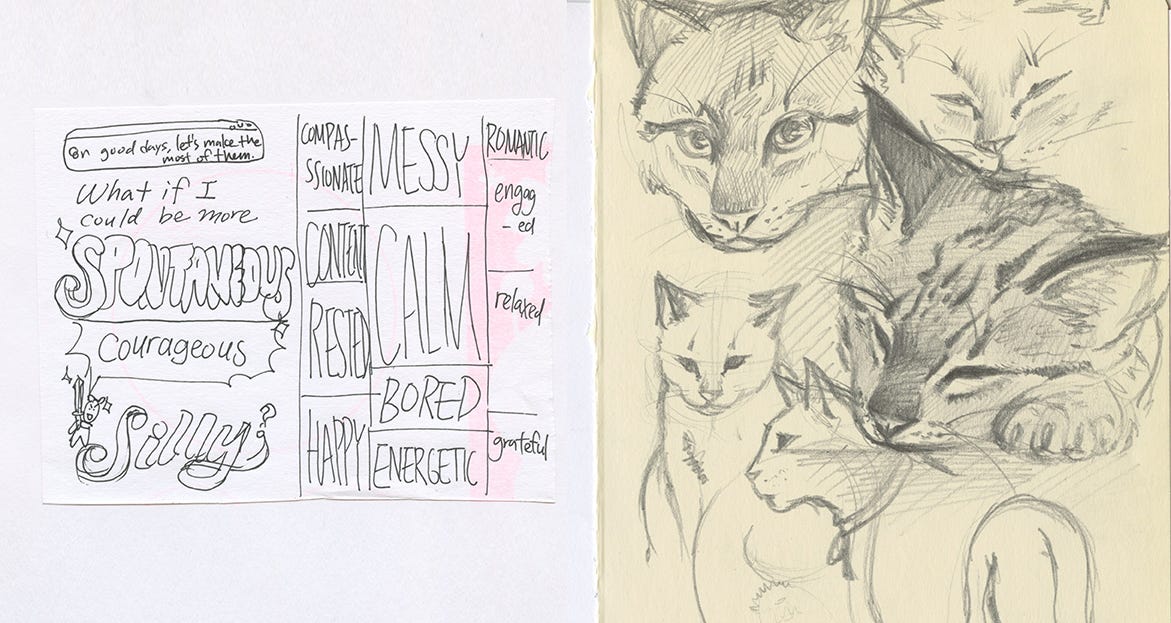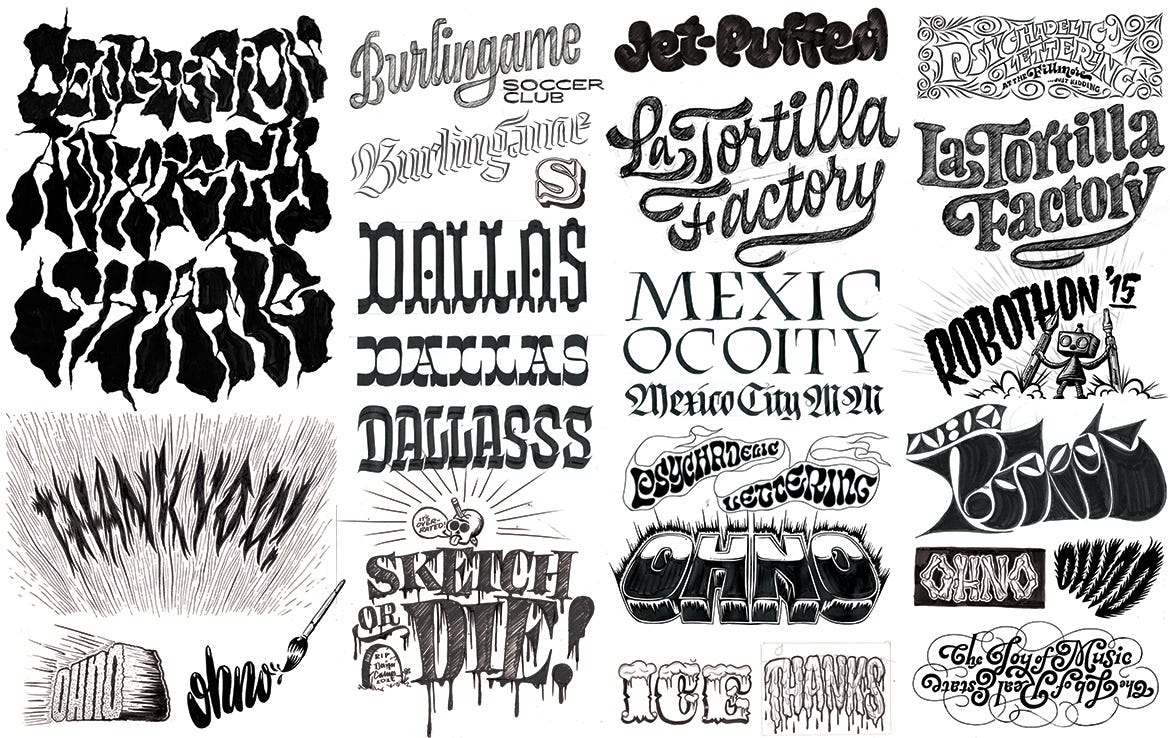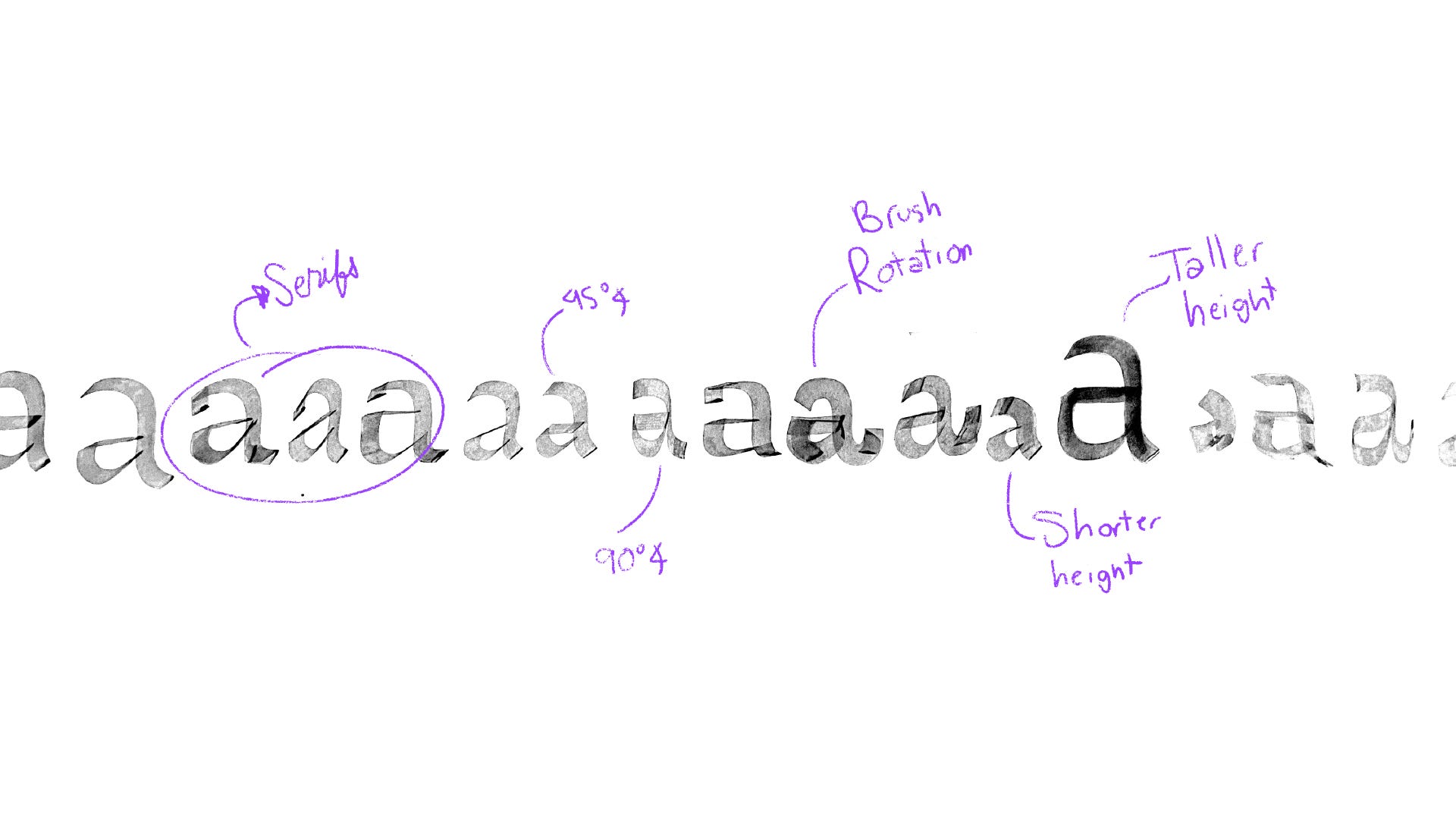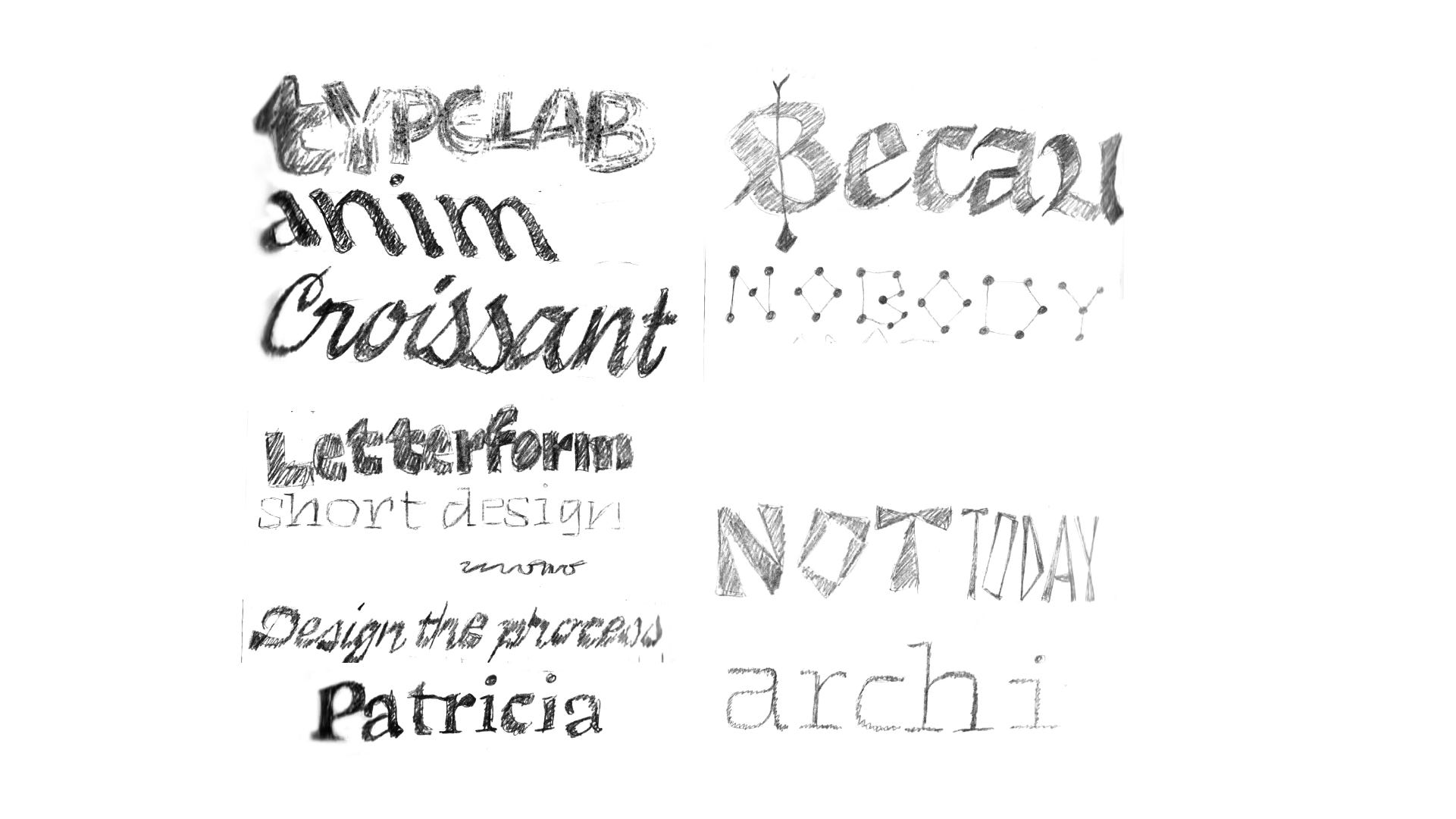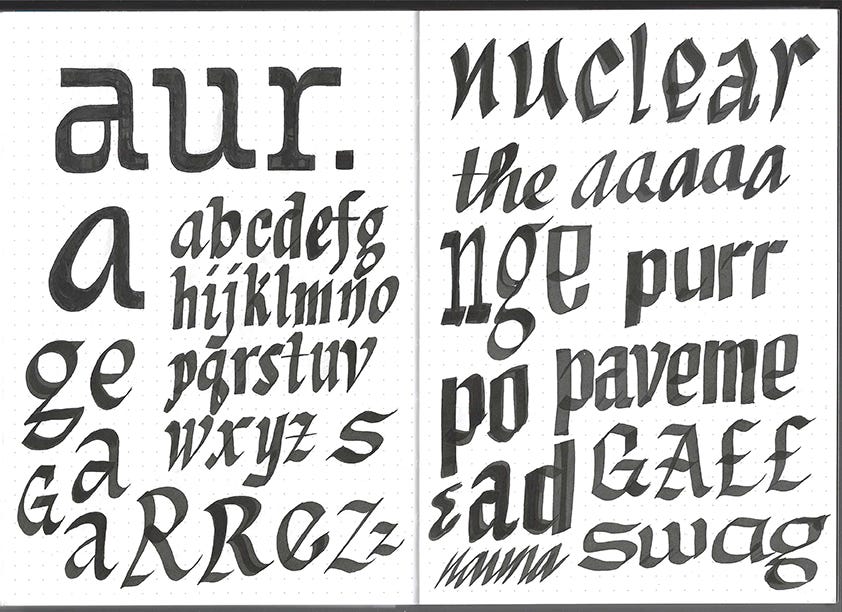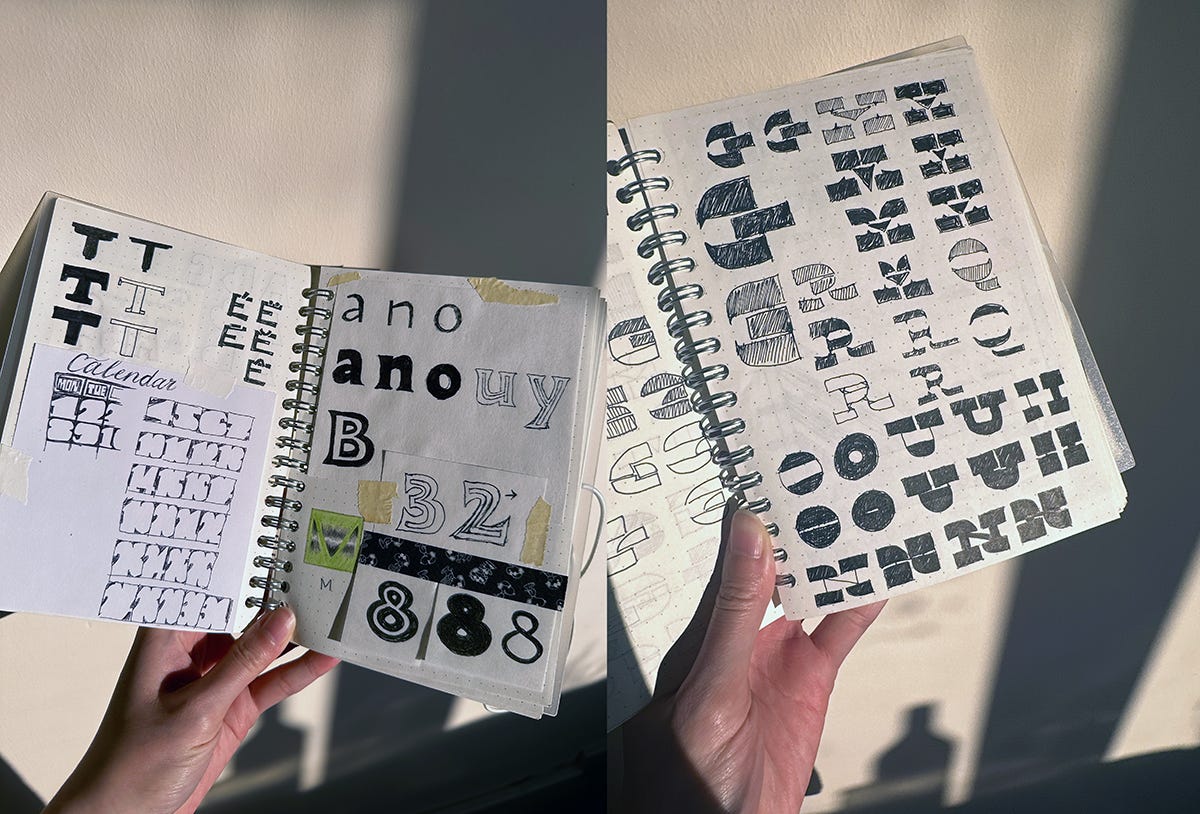My Idols & Their Sketchbooks
A peak inside the sketchbooks of 9 of my favorite people!
This email is quite long and may get cut off — please click here to read the whole thing. I recommend viewing on a laptop or desktop for optimal sketchbook viewing.
Happy Friday y’all!
I am bringing you another Just For Fun Email™ this week! I have been doing them monthly since the start of the year and it’s been really refreshing for me. I hope it’s enjoyable for you as well!
My Fun Emails™ are about subjects that are inspiring or relevant to me at the moment. Right now, I am really curious about how artists and designers use their sketchbooks. If you’ve been reading my emails lately, you’ll know that I am on a personal journey to be more consistent with drawing and sketching.
When I first thought of the idea for this email, I googled famous artist sketchbooks and there were a few interesting ones (my fave that I found was Georgia O’Keefe’s), but none of them were exactly what I was looking for.
After that, I started looking at artists/designers/letterers whose work has inspired me but very few people share their sketchbooks! I did find a few though: Kyle Letendre’s, Cyrus Highsmith’s, Laura Soto’s, and Mikey Burton’s. They’re all amazing and talented and definitely worth looking through!
There are also two books relevant to this subject — I have both of them and they’re awesome. Free Hand: New Typography Sketchbooks(2018) and Typography Sketchbooks(2011) both are by Steven Heller and Lita Talarico.
But finding so few sketchbooks online left me unsatisfied! Then it dawned on me that my friends and colleagues are some of the most talented people on the planet and I could just ask them! It’s just that simple! So below you’ll find sketchbook spreads from a handful of my idols, and a little info from them on how they use their sketchbook, and what they get out of it! Enjoy!
Adriana Garcidueñas
Follow her on IG or check out Tlayuda on FF
Sketchbooks are an obsession for me, in my free time or while I'm having breakfast I like to watch illustrator's sketchbook tours videos on youtube. I wish I sketched more, because when I sketch I feel the energy, excitement and ideas flowing. To me a sketch spread is like a mini lab where I can test ideas really quickly or fall into the rabbit hole while exploring certain ideas or lettershapes or typefamiles. Another big part of my sketching routine is to pick the format of the sketch for example choosing between big, medium or small notebooks; totally bank, dotted or ruled; it makes an impact in the sketches I think, maybe slightly but I think it does, and the last part but also very important is the tool I’m going to use, my comfort one is always a pencil and eraser, but the crazier the tool the crazier I also get. (the run bulletproof I did it with a tape whiteout and I absolutely hated using it but aaabsolutetly loved the result).
Romina Hernández
I’ve used a sketchbook on-and-off since they told me I had to, in my first Industrial design 101 class. At first I could not understand the use of it, but the hardcover notebook I’d chosen was a very satisfying object to have and carry around, so I stuck with it.
As I went on and worked on projects I cared about, and got good at… well… design, I found it to be an invaluable tool to develop ideas, keep notes and drawings together, and make ideas turn into things in the real world.
Specially after going to TypeMedia and studying there for a year, I’ve come to see drawing, and sketching, as just physicalized forms of thinking: You’re taking a note, or drawing something, not so you can show someone else, but so that you can work it out yourself.*
*(I’m basically paraphrasing Erik Van Blokland here)
So now I draw for pretty much everything. And I “sketch” everything, from a typeface idea to the table of contents of a client quote or presentation. Sometimes in sketchbooks, but specially if something isn’t going to be referenced later, just in loose sheets or the backs of receipts.
Pic 1: This might look boring, but on the right it’s a sketch for a couple critical weeks in April, where I had a lot going on and needed to divide up time. And on the left a whole page (it’s a large sketchbook) for the kickoff of a project. Just the key points, but getting them down by hand and adding those little arrows and rectangles, just helps my mind truly internalize stuff.
Pic 2: Sometimes I draw to test out ideas. I’ve never been one of those people that have a steady hand and clean lines. Quite the opposite in fact. So I’ve leaned into my “messy” sketching, and can develop a spread like this in a half hour or so. It’s not perfect by any stretch, but as I drew the forms of the caps over and over, I finalized the design in my mind, making it way easier and quicker to digitize. I think the yellow page I drew first, then the green one. (This is Outpact btw, a wip font from tortilla.studio.)
And Pic 3 is me just chilling and drawing for fun, leaning on the grid to get some cool looking sketches down fast and make me feel good about how much I’ve improved since I started with this type thing. (Yes, this was honestly the purpose of this spread.)
Lynne Yun
I sketch all the time, although the scale and effort of the sketches varies a lot!
For example, there’s the chicken-scratch-doodles I do every day: I often write down a to-do list when I first start working in the morning, and I’ll often draw a bit in the margins to get the “blank paper scaries” out of my system. Those sketches rarely look like anything substantial, but they help a lot to organize visuals in my head!
Of course on the other end, I have the ultra-detailed sketches that I make when I have the luxury of knowing that the sketches will directly translate to becoming the final draft for a project, like lettering for a greeting card.
I don’t think I can imagine not physically writing & sketching as a part of my process, because that’s the best way I can organize all the random thoughts floating around in my head :) Also since I’m always so tempted whenever I walk into a stationary store, it gives me a great excuse to buy & use all the cute notepads and pens that I end up with!
James Edmondson
I go in phases with sketching. Sometimes I'll go a few months without drawing too much, and then randomly a lot of ideas will come out at once. I have way more ideas than resources to actually finish fonts. Still, sketching is always a positive experience for me, and I never regret any time I spend exploring the inner recesses of my mind!
Tamara Segura
Find her on Instagram + her Monochromic Typeface via FF
For me sketching is a big part of the design process, even when I'm not sketching for something in particular, it is a way to get ideas out of my head, it doesn't matter if the sketches are small, a little sketch can sometimes lead to a nice idea. Also keeping them in a sketchbook, allows me to go back to them whenever.
Once I am starting a project or a piece, sketching then becomes a very important element of the development of an idea, sketching then turns from doodling and inspiration, into a more introspective and critical process; iterating and layering on top of something allows me to rework and analyze decisions, or try out different solutions for the whole thing.
Joanna Malinis
I've always been trained to sketch my ideas on paper first, and that habit has carried over from my graphic design practice to type design. It makes a lot of sense, especially since type design often explores how tools shape letterforms. That's how I approach sketching, too. I mainly use it for ideation and to better understand how a tool influences form. Sometimes, I try to make something more polished just to see if I can, but more often than not, I focus on how strokes naturally create shapes by observing the movement of the tool.
Kel Troughton
of Overlap Type and Letter Person Projects
These are some quick sketches from my type ideas notebook. I buy basic graph paper notebooks and try to get ideas down quickly. Often I get ideas on loose marker paper, then bring those into these notebooks to keep exploring. I draw pretty small on the top of the page, then I will draw something bigger on the bottom of the page using ideas from the top sketch. The sketch that says NERF was the first drawing for my typeface Parch, using overlapping rounded simple shapes to make a simple sans serif out of negative space.
Sophia Tai
I usually reach for my sketchbook in the ideation phase, when I’m stuck on a visual problem that I need to mull on, or when I need to break away from an existing project to help me reframe.
Martha Sue Coursey
Find her work here and both of her typefaces on FF
My sketchbooks are a way of thinking, being, and are necessary for my survival. Survival of both boring meetings/lectures and interesting ones. It's necessary to keep one part of my mind in motion while I listen or don't listen. In these spaces I allow the 100% intuition-based part of myself to work on projects, explore new ideas, or respond to what I'm seeing or listening to. The pages are often a mix of my inner/outer worlds and they have contributed to every creative project I've ever done. What the heck would I do without them?
That was amazing! Special thanks to my friends for sharing their sketches with us!! You’re all the best. <3
Ttys,
Libbie











